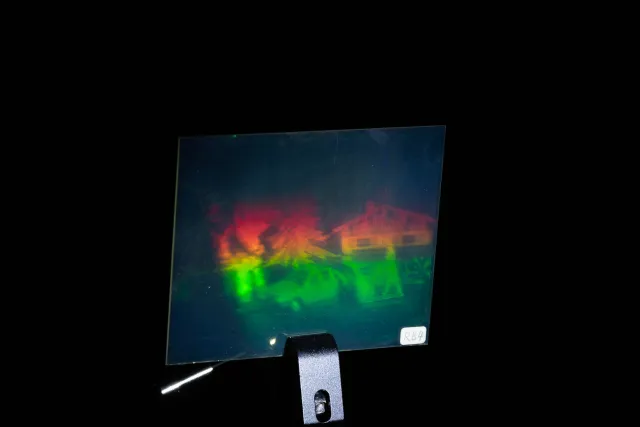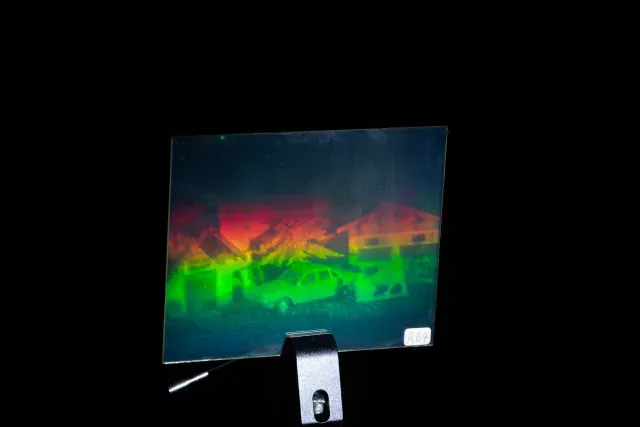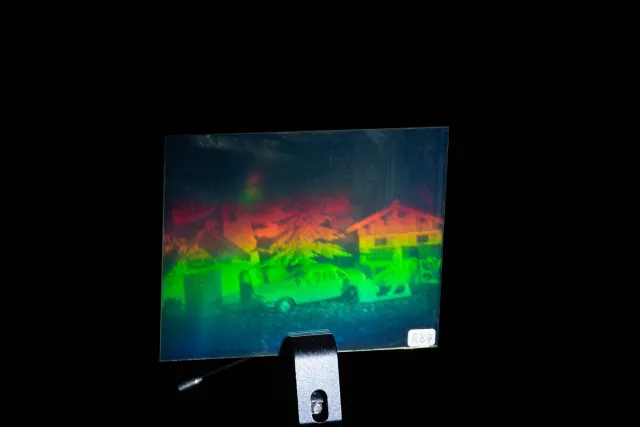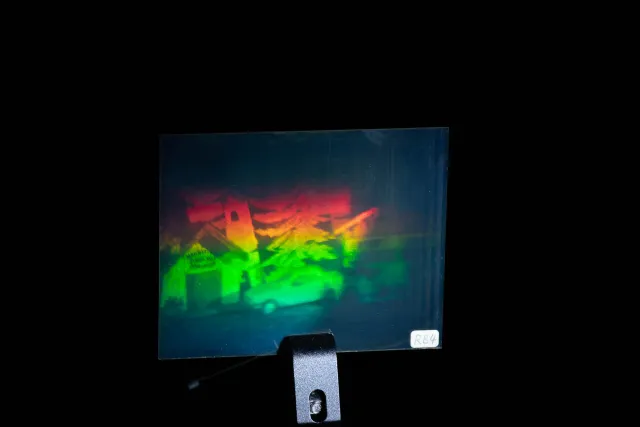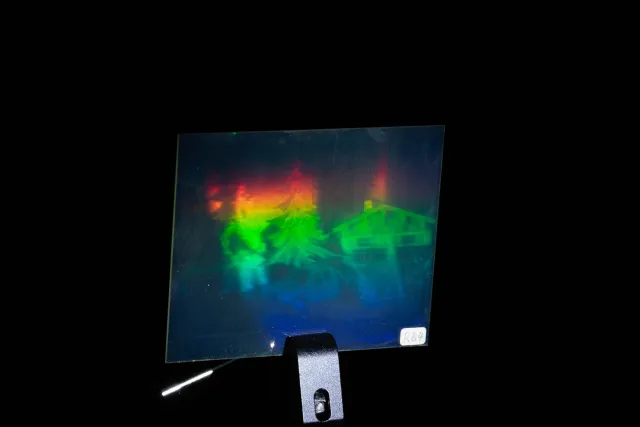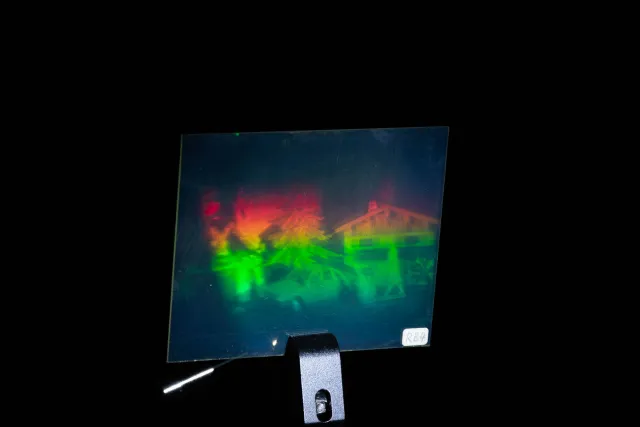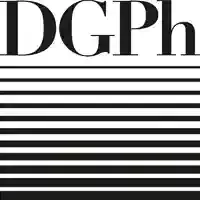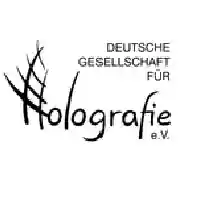Rainbow holograms are a special type of white light holograms. The technique for generating rainbow holograms was developed in 1968 by Dr. Stephen A. Benton designed. Rainbow holography uses a horizontal slit and / or cylindrical lenses to remove vertical parallax in the output image. This reduces the spectral blurring while maintaining the third dimension in the observation. If you look at a rainbow hologram that is moved around the horizontal axis, you only see the change in colors. If you turn it around the vertical axis, you can see the three-dimensionality of the object.
Since the 3D effects are only reproduced along one axis, the subject may appear distorted when the hologram is viewed from extreme angles. However, these distortions appear small if there is not much depth in the subject.
Holograms printed on identification cards are examples of rainbow holograms. But they also play a role in art, as the monochrome can be compensated for by pure white light holograms. The recordings initially show a rainbow hologram that is rotated vertically. Here you can see the three-dimensionality and the subsequent recordings show the rotation around the horizontal axis, in which the depicted object only passes through the color spectrum.
Recording techique: "Rainbow holograms"
Continent or ocean
Country
Region
Picture 1: Rainbow hologram in vertical rotation
Picture 2: Rainbow hologram in vertical rotation
Picture 3: Rainbow hologram in vertical rotation
Picture 4: Rainbow hologram in vertical rotation
Picture 5: Rainbow hologram in horizontal rotation
Picture 6: Rainbow hologram in horizontal rotation
Picture 7: Rainbow hologram in horizontal rotation
Picture 8: Rainbow hologram in horizontal rotation
Video: The Rainbow-Hologram as video

